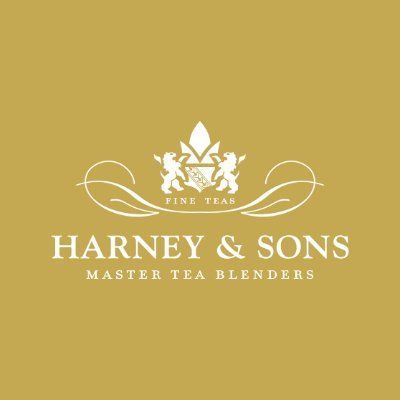Harney & Son's Fine Tea's
Ethically Sourced | Hormone & Antibiotic Free | Local Family Farms
Ethically Sourced Hormone & Antibiotic Free Local Family Farms
The finest teas from all over the world
In 1983, John Harney embarked on a mission to share his passion for great tea. From the first six teas we offered then, to today, when you can choose from over 300 varieties of the highest quality teas, it has been a remarkable journey. We look forward to sharing our tea, our passion and our knowledge, with you. Cheers, from our family to yours.

Tea 101
Tea is an infusion made from the dried leaves of a flowering evergreen plant camellia sinensis. Originally native to Eastern and Southern Asia, it is now grown successfully in Africa and South America. Of the four major types of teas, green is primarily from Japan, oolong, mainly from Formosa, black, primarily from Sri Lanka and India, and black scented teas.
In general, each estate and garden uses a single style of processing determined by its elevation, moisture, and farming practices. Tea likes it steamy, growing fastest from sea level to 6,500 feet in hot temperatures with 80 to 150 inches of annual rain, high humidity and fog. At higher elevations or in shade, it grows more slowly. This climatic change also produces a more intensely flavored tea, like that of a Darjeeling.
Harney & Sons’ remarkable array of teas are sourced from the finest tea gardens around the world and include pure teas, and blends, like English Breakfast, usually a mix of Indian and Chinese black teas. In addition, there are flavored teas, these have become enormously popular in recent years and are a specialty of Harney & Sons. This is, however, just the beginning of what there is to know about tea.
How to Brew the Perfect Cup
1. Choose the best quality of tea
A good pot of tea cannot be made from inferior tea.
Harney and Sons offer a wide range of teas that will suit both your taste and your pocket.
2. Brew with fresh, pure water
There is a favorite saying in the tea world: Water is the mother of tea.
Hard water, sulphurous water or chlorinated water all affect the taste of your tea.
If need be, water should be filtered., unless you are fortunate enough to live near a spring; spring water is ideal!
3. Use fresh tea in good condition
The best tea is enjoyed fresh.
Tea should be stored in sealed containers away from the light in a cool place. Because tea picks up flavors and odors around it, keep coffee and spices away from your tea. Even though it is dry, tea can become stale after an extended period of time. Remember to drink your tea; don’t waste it!
4. Steep properly at the right temperature
Steeping is infusing water with tea. Pour hot or boiling water over your tea for the recommended time and at the correct temperature allowing the flavors to develop. See Recommended Temperatures below.
5. How to brew the perfect cup
The art of brewing delicious tea
Heat your pot by filling it with boiling water to raise the temperature of the pot. Recycle the water.
Use one tea sachet (or teaspoon or teabag) for each cup of tea desired. Follow the steeping instructions for each tea, as each has their own required time and temperature.
Once the steeping time is reached, remove sachet, tea or teabag to achieve perfect strength. A timer will help you make it “spot on.” Relax and enjoy.


Share On: